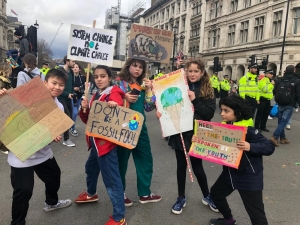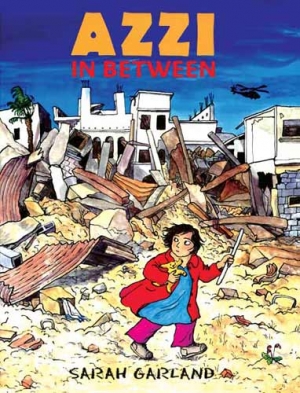As young people take to the streets to protest about climate change, Kim Reynolds discusses the way political activism by young people at the Battle of Cable Street has been portrayed in radical children's literature, and urges us to 'heed the truth/Spoken by the youth'
What has come to be known as ‘The Battle of Cable Street’ was a working-class uprising that took place in the East End of London on the 4th of October, 1936. Over the decades, it has taken on legendary significance in the UK because it is credited with defining British opposition to fascism and so shaping Britain’s role in World War II. That claim is exaggerated; nevertheless, the events in Cable Street saw approximately 250,000 anti-fascist demonstrators from a great range of backgrounds converge to prevent Oswald Mosley and 3,000 members of his British Union of Fascists from marching through the largely Jewish East End of London.
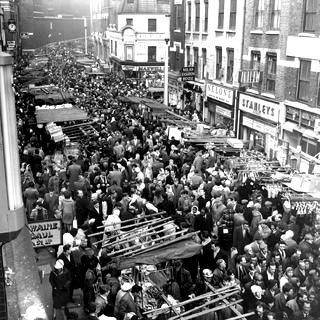
Their permission to march was guaranteed by the Home Office despite the fact that it received a petition, organised by the Jewish People’s Council, carrying 100,000+ signatures against the march two days before it was scheduled. In line with that decision, while Mosley and his ‘Blackshirts’ may have been the reason for this huge and sometimes violent protest, the actual ‘battle’ was largely between the protesters and the 6,000 police – representatives of the State – who were protecting Mosley’s and his followers’ right to march. That fact combined with the multicultural nature of the protesters has become more prominent in recent accounts of the events.
This article focuses on books about The Battle of Cable Street because the subject is intrinsically radical and so serves as a bellwether for attitudes to left-wing activism. In the light of today's political activism by young people, I was specifically interested to see how far the Cable Street setting is used to help today’s readers understand themselves as activists and to believe that it matters what populations and individuals – whatever their age – do and do not do.
The political permutations of this confrontation are complicated: it was about fascism, but also about class, economics, migration and schisms within various political groupings. For the purposes of this discussion, my interest is in how the story has been told, by whom, and the fact that youth activism has to a very large extent been erased from the versions told to children. This absence is significant, since children and young people were certainly among those who opposed Mosley and their police guard. For instance, eyewitness reports and testimony from those who participated say children were encouraged to throw marbles under the hoofs of the mounted policemen’s horses.
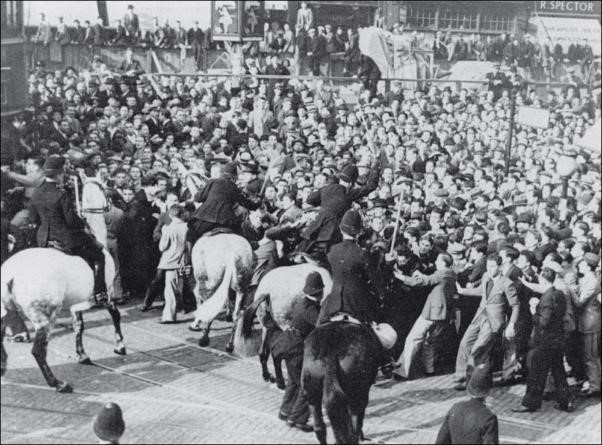
This was evidently an effective strategy as the consequences are mentioned in many accounts, including this description given by a man who was a fifteen-year-old participant: “Suddenly, the horses’ hoofs were flying and the horses were falling down because young kids were throwing marbles.” Girls tell how they went out armed with pockets full of pepper dust to throw in the faces of the fascists. Children also climbed up lamp-posts to see over the crowds and direct the protesters to places where the police presence was weak. Two juveniles were among the 85 people arrested at the scene and a number of others had to be treated for injuries.
More than such involvement by individual children and young people, however, is the fact that a major anti-fascist rally that had been organised for the same day by the Young Communist League to raise money for the Republicans in Spain day was redirected from Trafalgar Square to the streets where the Blackshirts were scheduled to march. This means a huge youth contingent swelled the numbers present in and around Cable Street. (The YCL was the communist equivalent of groups such as the Scouts, the Boys’ and Girls’ Brigades and the YMCA/YWCA.)

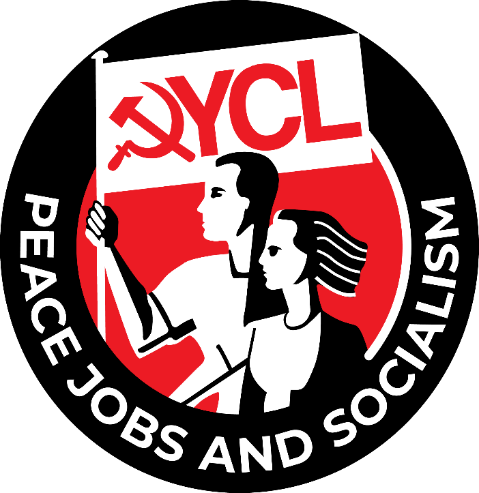
Leaflet and YCL logo. There wasn’t time to reprint leaflets so the existing ones were over-printed with instructions to rally near Cable Street.
This is far from the first time that children on the left of society had taken to the streets of Britain to demonstrate a political stance, but it was the most tumultuous. More usually their street activities took the form of pageants, tableaux, short plays and processions on political themes and subjects such as peace, internationalism and reforming the economy.
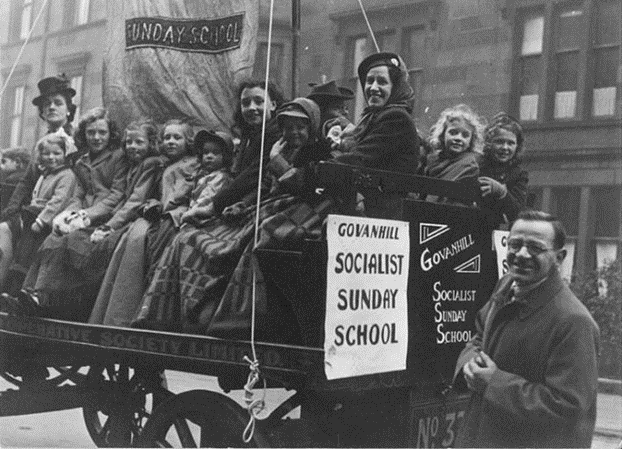
Such performances were often scripted, constituting a politically motivated subgenre of children’s literature and a form of activism. In the 1930s these were complemented by left-wing children’s publications that exhorted children to activism by celebrating the contributions of children to uprisings in the past, children’s bravery in opposing fascism at home and abroad, and encouraging them to prepare for the revolution they believed was soon to come.
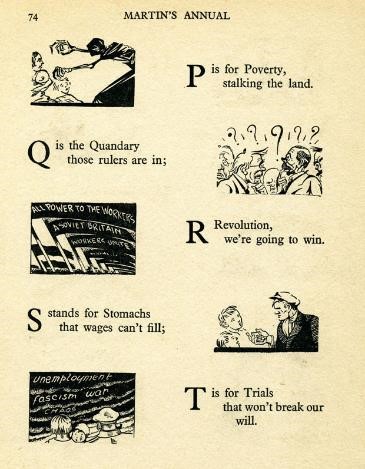

Examples of radical children's stories, from Martin's Annual 1935 and elsewhere
The symbolic value of babies, children, and young people – whether as victims of neglect or the hope of the nation’s future – was fully exploited by protesters. In the weeks following the demonstrations around Cable Street, infants and children of all ages were very much in evidence in new demonstrations demanding improvements in the living conditions of the poor, such as orchestrated rent strikes in cities across the UK. These were a direct spin-off from the events in Cable Street, for the Left feared there were opportunities for the fascists in areas beset by the problems of poverty, not least of which was high rents for atrocious housing.



Most of these activities and the texts supporting them are long forgotten, but since the 1990s, various accounts of the Battle of Cable Street written for children have been produced, and materials about the events feature in teaching materials, including those created outside the UK. For instance, FACING HISTORY AND OURSELVES, a US-based organisation that aims to use education to prevent racism, bigotry, prejudice and intolerance and to explain how democracy works includes two units on the Battle of Cable Street. The compilers believe that ‘…by engaging with this history, students will think critically about the choices made by the East End community and its allies in 1936 and then consider choices available to them as agents of change in the face of prejudice and discrimination….’ In other words, The Battle of Cable Street is seen as useful to helping young people today understand themselves as implicated in the way events in the world around them play out.
The teaching units ask them to think about what they would have done then, and what they might do now. It is significant that FACING HISTORY is an independent organisation that offers materials for free and provides professional development outside the mainstream of educational systems. Since the days of student protests in the late 1960s and early 1970s, there has been considerable concern by governments in many countries to prevent classrooms from fostering youthful radicalism and to containing student activism (Woodman; Myers).
The FACING HISTORY units make use of historical records, including eyewitness testimony, memoirs, reportage and legal proceedings. Many of the same materials inform fictional accounts of the Battle of Cable Street for children and young people, but where the teaching materials encourage pupils to position themselves alongside the activists, in fictional accounts, the Cable Street setting is much more circumspect about portraying children as activists. Indeed, the two most recent novels about Cable Street suggest that even for those avowedly on the Left, a combination of ambivalence and constraint is affecting how far children’s books promote youthful activism.

The first of these is Alan Gibbons’s Street of Tall People. Published in 1995, it retells the events leading up to Cable Street half a century after they occurred. Gibbons is a self-proclaimed activist for the Left, so his decision to write about an incident that is claimed as a significant victory for both the Left and working people is unsurprising. What is surprising is the way this story treats the two boys at its centre as witnesses to history rather than participants. Jimmy lives in a bug-infested, run-down block of flats with his mother in a poor part of London’s East End while Benny comes from an Orthodox Jewish family a few streets away. Ordinarily Jews and Gentiles in the area don’t mix, but the boys encounter each other in the boxing ring and strike up a strong friendship. They meet each other in the days leading up to Mosley’s planned march through the East End, something of which Jimmy and the people he lives among are largely unaware. Listening to the talk among Benny’s family and friends, he picks up on their fear and also discovers that the hated rent collector, who has started dating his mother, is a Blackshirt.
The boys want to help ‘stop Mosley,’ but they arrive after the Blackshirts have retreated. This is in part because the story significantly underplays the extent of the Left’s preparations for the march. Although rumours abound, there is little evidence of an organised response beyond a woman handing out leaflets and a car with a placard urging all the locals to come out to ‘Bar the road to fascism’. At one point Benny’s older sister and her fiancée are seen manning a first aid station, but there is no mention of the Trafalgar Square demonstration or the role of young people in helping to orchestrate the resistance to the police and the fascists.
More importantly, for most of the story, Jimmy and Benny are seen as quite independent and capable. Jimmy is one of the best boxers at his club and Benny is clever and ambitious. When they finally get to the streets where the fighting is taking place, however, their youth and vulnerability become their defining features. Indeed, the book’s title contrasts their size with the real activists: ‘He saw the bearded Jews standing shoulder-to-shoulder with people who’d never seen the inside of a synagogue in their lives. There were no Jews or goyim, only people; a street of tall people.’ (105)
As with children at the time, the boys climb a lamp post where they can see what’s going on. In practical terms this allows Gibbons to have them describe the red flags and banner proclaiming ‘They Shall Not Pass!’ The lamp post, the banners and many other details in the book indicate that Gibbons did considerable research into the events and how young people were involved, but though Benny and Jimmy are indisputably on the side of the locals, they are not marble and pepper-dust throwers and they do not use their vantage point to direct the crowds. They do, however, follow the crowd as it moves on to defend Cable Street. There they see broken glass, overturned lorries, smashed furniture, and debris of all sorts and hear from another spectator that the fighting has not been with the Blackshirts but with the police because, ‘Mosley won’t do his own dirty work.’ (106)
Gibbons makes it clear that boys their age do not belong on the streets during times of political uproar. People tell them to go home because, ‘This is no place for children’ and, ‘This could turn nasty.’ (103) Ultimately, the boys are in the way rather than helping with the action. When the police make another charge and nearly trample Benny, the boys have to be rescued by a docker and returned to their families. Far from being disappointed, however, the boys are satisfied, because not only did they see the East End come together to prevent the fascists marching, but their escapade brings their families together. The Battle of Cable Street is used not to inspire activism but to promote the virtues of class unity, inclusion and multiculturalism, and Street of Tall People does this in a very traditional way: by having children show grow-ups the error of their ways and making friendships that ignore social barriers based on prejudice and ignorance. And this, rather than political activism, is the purpose of the story.
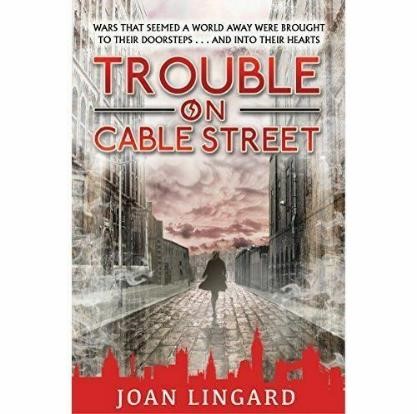
Joan Lingard’s Trouble on Cable Street (2014) is for a slightly older audience (teenagers rather than pre-teens) and it is much more invested in youth activism. As well as showing young people successfully resisting the efforts of the Blackshirts to commandeer support in the Cable Street area, it also features young men who join the International Brigades to fight in Spain. These two strands are intertwined in ways that celebrate youthful idealism, passion and commitment without suggesting that these qualities can guarantee success.
Lingard is, of course, no newbie when it comes to writing about conflicts and how young people are caught up in them. Her Kevin and Sadie novels from the 1970s are among the few to deal with the ‘troubles’ in Northern Ireland. Catholic Kevin and Protestant Sadie begin by being staunch supporters of their own communities but their encounters gradually shift from hostile to sympathetic and eventually romantic. Their activism is on a local and empathetic level, though especially in Across the Barricades (1972) it is also caught up in the marching season and the wider hostilities. They suffer for their relationship but they are morally and emotionally strong. By extension, these qualities and their unflagging resolution are projected onto youth as a category, but not in an easy, naïve or traditional way. As a stand-alone novel featuring less immediate conflicts, Trouble on Cable Street could never accomplish as much as the Kevin and Sadie books. Nevertheless, it paints an informed and empathetic picture of young people growing up in conflicted times and making a difference. Activism here is on an individual level. It means standing up for what you believe in; being informed and educated; and committing to your beliefs in the service of others, irrespective of age, sex, nationality, religion, or ethnicity.
The Battle of Cable Street occurs in the opening pages of the book. It is used to show how volatile the situation was locally and globally. The area around Cable Street is populated with migrants. We meet the central character, Isabella, whose mother is Spanish, her best friend is Irish, and Izzie works as a seamstress for a Jewish refugee from Nazi Germany. Nearly 16, Izzie has been working since she was 14 – like all the young people in the area who can find work. Her 17-year-old brother Will is preparing to leave to fight in Spain at the start of the book – and he is cheered by the street when he leaves for the station. The family helps a Scottish boy who came to support the Cable Street opposition before going to Spain (but dies as a consequence of his injuries) and a wounded friend of Will’s who arrives from the fighting in Spain. Essentially all the action is done by young people.
The most important action is associated with the Battle of Cable Street. Another of Izzie’s brothers as well as a co-worker are among those seduced by the promises of the Blackshirts. Izzie is pursued by one of the Mosley’s entourage, but is not taken in by his smooth manners and polished arguments. She helps expose the Blackshirts’ political aims and violent tactics, thereby discrediting the movement among her friends and, more importantly, the readers.
Although Izzie is not an activist organiser, she participates in The Battle of Cable Street and crucially, she carries on its work of opposing Mosley and trying to improve life for the people in her area. Another significant factor in the book is that Izzie and her family are committed to education. She attends night school and is eventually able to move up from seamstress to stenographer – and she plans to continue to study and rise. Her father, too, continues with his education and at home enjoys reading the classics.
Both Izzie’s ability to act and to discriminate between causes are grounded in her well-trained and informed mind. For budding activists, this is arguably the most important lesson of all: the energy, passion and ideals of the young can be caught up in perverted causes if they lack the ability to interrogate arguments and the moral compass that distinguishes between right and wrong. Her less educated older brother becomes, for a time, a ‘useful idiot’ in the service of the Blackshirts, but he has the courage to disown them when he learns to see them clearly.

Heed the truth/ spoken by the youth
There are many books that offer this lesson, but fewer which do so in the kind of political context created by The Battle of Cable Street. Recently we have seen a resurgence of youthful activism around gun control in the USA and climate change in a great many countries. As well as reportage, it feels important that the rising generation has the chance to engage empathetically with well-informed fiction that takes them through the challenges, dilemmas, set-backs and particularly the importance of organised opposition to policies and practices that put the future – everybody’s future – at risk.








